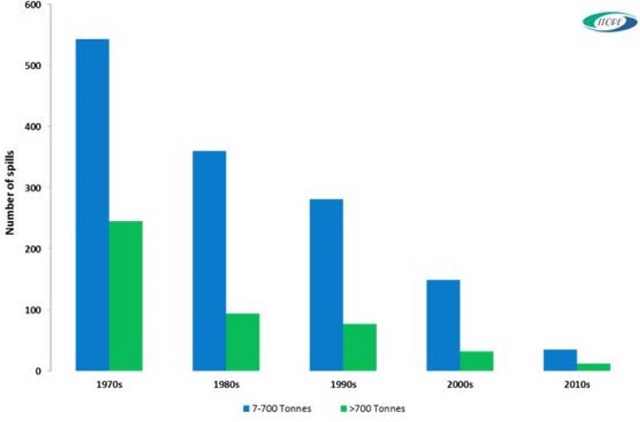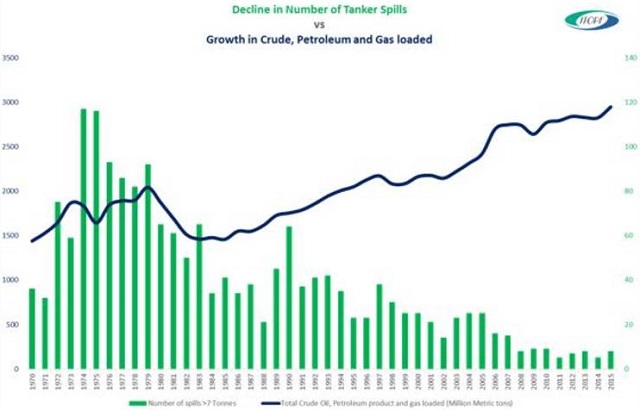Downward Trend in Tanker Spills Continues
The International Tanker Owners Pollution Federation (ITOPF) reports that the downward trend in oil spills from tankers is continuing. The average number of large oil spills from tankers, i.e. greater than 700 tons, has progressively reduced, and since 2010 averages 1.7 per year.
.jpg) In 2016, one tanker incident which resulted in a spill of greater than 700 tons of gasoline and diesel was recorded in the Gulf of Mexico in September. Four medium-sized spills (seven to 700 tons) of fuel oil were also reported in 2016.
In 2016, one tanker incident which resulted in a spill of greater than 700 tons of gasoline and diesel was recorded in the Gulf of Mexico in September. Four medium-sized spills (seven to 700 tons) of fuel oil were also reported in 2016.
The total amount of oil lost to the environment through tanker incidents in 2016 was approximately 6,000 tons, the majority of which can be attributed to the incident in the Gulf of Mexico.
.jpg) The progressive reduction in number of large spills is significant when data is analyzed per decade rather than annually. Data recorded from 1970 to 2016 show there can be fluctuations in the yearly values within a decade.
The progressive reduction in number of large spills is significant when data is analyzed per decade rather than annually. Data recorded from 1970 to 2016 show there can be fluctuations in the yearly values within a decade.

In the period 1970 to 2016, nearly 50 percent of large spills occurred while the vessels were underway in open water. Allisions, collisions and groundings accounted for 59 percent of the causes for these spills. These same causes accounted for an even higher percentage of incidents when the vessel was underway in inland or restricted waters, being linked to some 99 percent of spills.
Today, some 99.99 percent of crude oil transported by sea arrives safely at its destination, says ITOPF.

In 1967, the grounding of Torrey Canyon off the U.K. focused the world’s attention on the risks and environmental impact of major marine oil spills. At the time it was the world's worst oil spill, with an estimated 25–36 million gallons (94–164 million liters) of crude oil spilt.
The intervening fifty years have seen a dramatic and sustained reduction in tanker spills, thanks to the cooperative efforts of governments and industry. The exhibition tells the story of this collaborative work which has resulted in a comprehensive regulatory framework, a demonstrably improved shipping industry, good systems of preparedness and response and adequate compensation for those affected by spills, says ITOPF.
